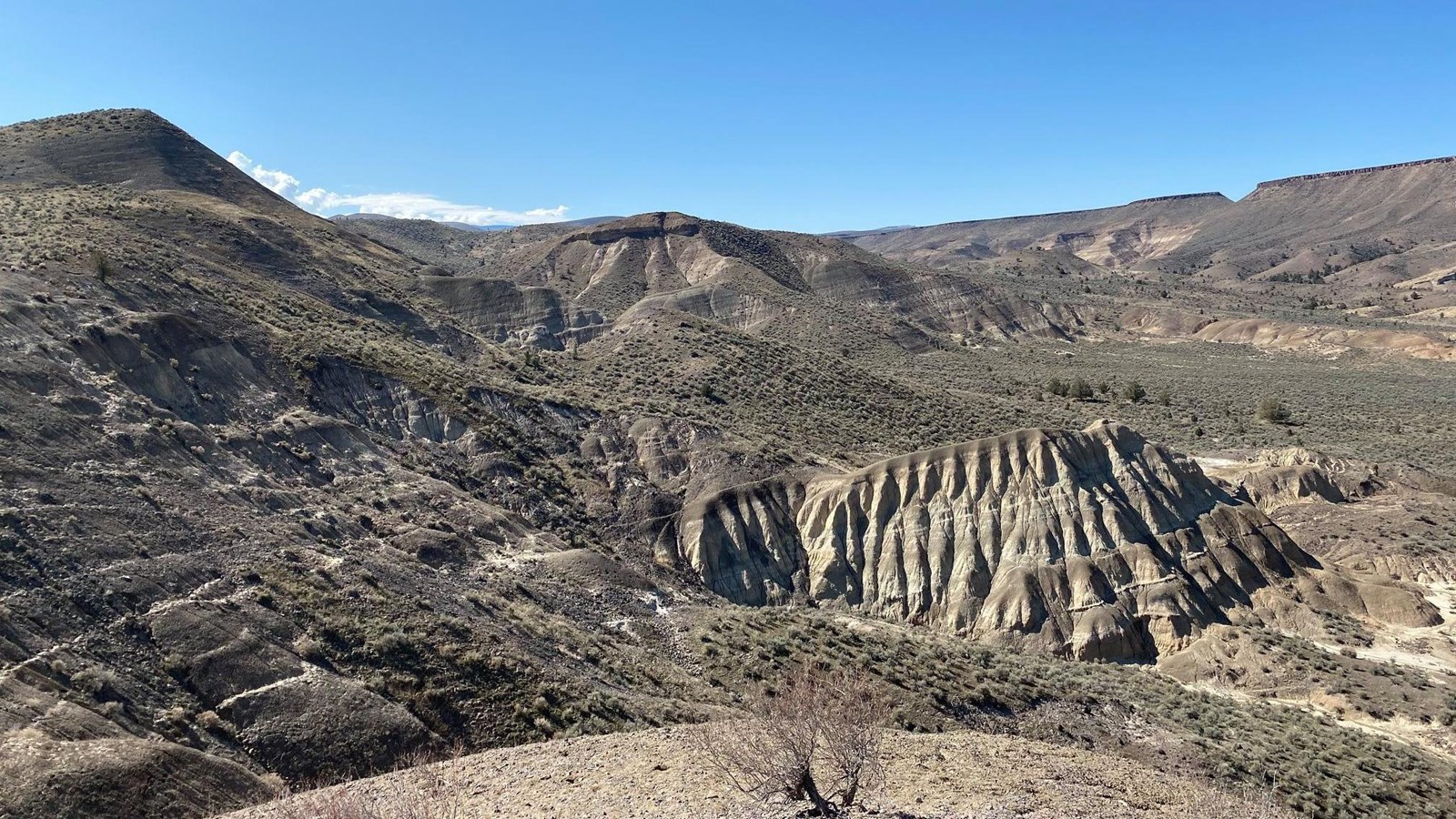Last updated: April 4, 2021
Place
Mascall Formation Overlook

NPS Photo
Quick Facts
Location:
Sheep Rock Unit
Significance:
Scenic view of 16 million year old formations. Informational brochures, picnic tables, and pit toilets are located here as well.
Amenities
11 listed
Benches/Seating, Historical/Interpretive Information/Exhibits, Information, Information - Maps Available, Parking - Auto, Parking - Bus/RV, Picnic Table, Scenic View/Photo Spot, Toilet - Vault/Composting, Trailhead, Trash/Litter Receptacles
Mascall Formation Overlook (430 feet round trip) Sweeping views of the John Day Valley and Picture Gorge can be seen from the overlook. Informational brochures, picnic tables, and pit toilets are located here as well.
These deposits were subsequently covered by successive falls of ash from volcanoes to the west and from the much closer Strawberry volcanics to the east. Alternating between the tuffs (consolidated volcanic ash) are layers of ancient soils and stream deposits that provide evidence of a dynamic floodplain. Many of the vertebrate fossils from the Mascall formation are found in close association with a prominent layer, the 15 million-year-old “Mascall Tuff.”
Mascall Formation
The rocks of the Mascall Formation were laid down in a series of wide, level basins following a ferocious volcanic period 15 million years ago. The Mascall landscape consisted of several broad basins with lakes and meandering streams that formed atop the last of the Picture Gorge Basalt flows.These deposits were subsequently covered by successive falls of ash from volcanoes to the west and from the much closer Strawberry volcanics to the east. Alternating between the tuffs (consolidated volcanic ash) are layers of ancient soils and stream deposits that provide evidence of a dynamic floodplain. Many of the vertebrate fossils from the Mascall formation are found in close association with a prominent layer, the 15 million-year-old “Mascall Tuff.”
